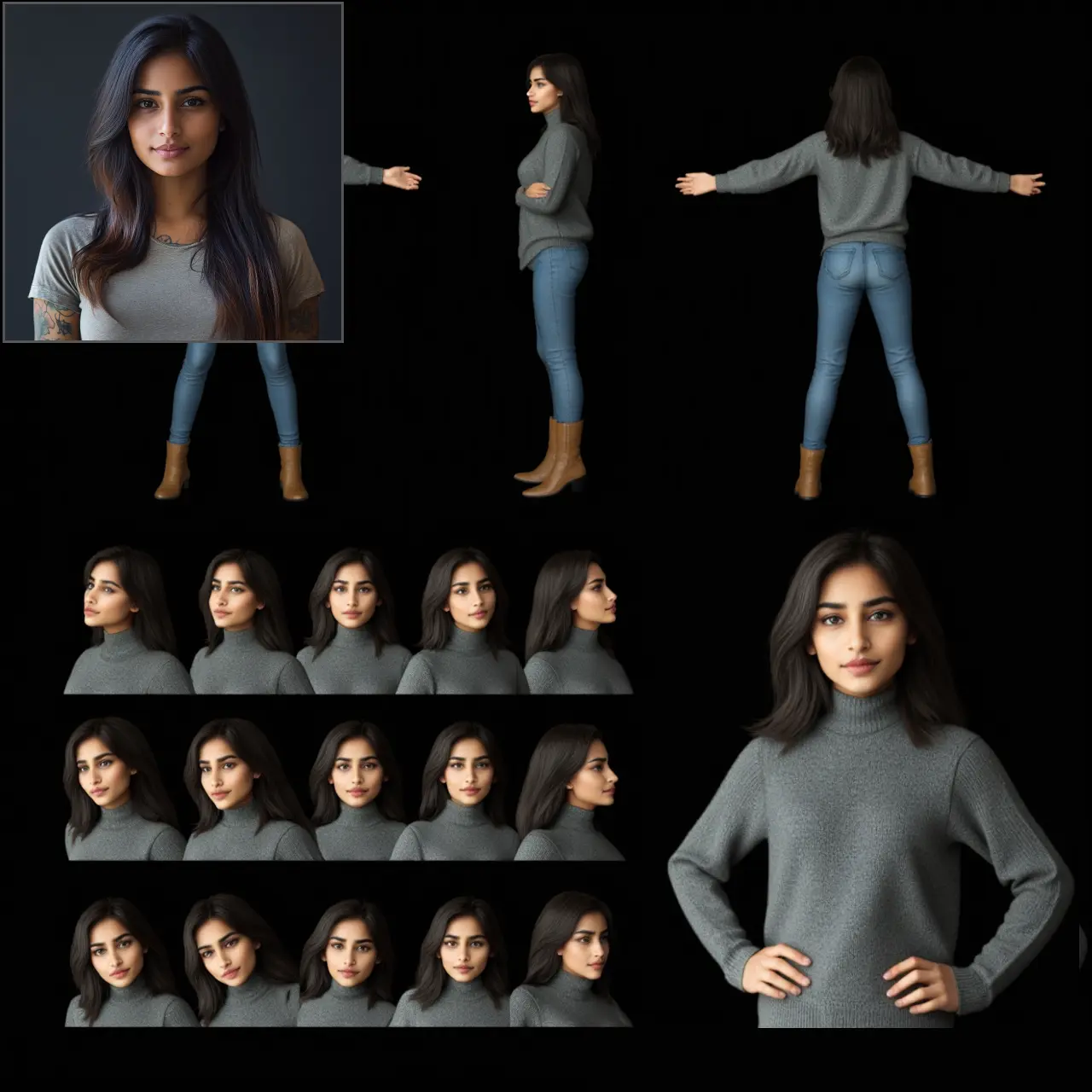ComfyUI Node: Zenkai Depth Prompt
ZenkaiDepthPrompt
CategoryDJZ-Nodes
DriftJohnson (Account age: 4052days) Extension
DJZ-Nodes Latest Updated
2025-04-25 Github Stars
0.04K
How to Install DJZ-Nodes
Install this extension via the ComfyUI Manager by searching for DJZ-Nodes- 1. Click the Manager button in the main menu
- 2. Select Custom Nodes Manager button
- 3. Enter DJZ-Nodes in the search bar
Visit ComfyUI Online for ready-to-use ComfyUI environment
- Free trial available
- 16GB VRAM to 80GB VRAM GPU machines
- 400+ preloaded models/nodes
- Freedom to upload custom models/nodes
- 200+ ready-to-run workflows
- 100% private workspace with up to 200GB storage
- Dedicated Support
Zenkai Depth Prompt Description
Facilitates depth-based prompts using image-text pairs, organizing and filtering data for AI artists.
Zenkai Depth Prompt:
The ZenkaiDepthPrompt node is designed to facilitate the generation of depth-based prompts by managing and utilizing image-text pairs stored in a specified directory. This node is particularly useful for AI artists who wish to create or manipulate images based on depth information, as it allows for the organization and filtering of image-text pairs according to specific criteria. The node automatically creates necessary directories and handles the absence of valid data gracefully by providing default outputs. Its primary function is to ensure that only relevant image-text pairs are used, which can be filtered further using a whitelist of terms. This capability is essential for artists looking to streamline their workflow and focus on specific themes or concepts in their creative projects.
Zenkai Depth Prompt Input Parameters:
prompt_folder
The prompt_folder parameter specifies the directory where the image-text pairs are stored. It is crucial for the node's operation as it determines the source of the data to be processed. The node will create this folder if it does not exist, ensuring that the environment is set up correctly for subsequent operations. There are no specific minimum or maximum values for this parameter, but it should be a valid directory path.
seed
The seed parameter is used to ensure that the node's operations are consistent and reproducible. By changing the seed, you can influence the randomness of the node's processes, which can be useful for generating varied outputs. The seed should be a floating-point number, and while there are no strict minimum or maximum values, it should be chosen to suit the desired level of variability in the results.
mode
The mode parameter defines the operational mode of the node, which can affect how the image-text pairs are processed. While specific modes are not detailed in the context, this parameter typically allows users to switch between different processing strategies or algorithms, providing flexibility in how the node is utilized.
num_images
The num_images parameter determines the number of images to be processed or generated by the node. This parameter directly impacts the node's output, as it controls the volume of data being handled. There are no explicit minimum or maximum values provided, but it should be set according to the user's requirements and the available resources.
whitelist
The whitelist parameter is a string that contains terms used to filter the image-text pairs. Only pairs that contain these terms in their text component will be considered valid. This parameter is essential for narrowing down the dataset to only those pairs that match specific themes or concepts, enhancing the relevance of the node's output. The whitelist can be empty, in which case no filtering is applied.
Zenkai Depth Prompt Output Parameters:
image_tensor
The image_tensor output is a tensor representation of the images processed by the node. This output is crucial for further processing or analysis, as it provides a structured and efficient way to handle image data. If no valid image-text pairs are found, a default tensor of zeros is returned, ensuring that the node's output is always well-defined.
status_message
The status_message output provides feedback on the node's operation, indicating whether valid image-text pairs were found and processed. This message is important for understanding the node's behavior and diagnosing any issues that may arise during its execution. It can convey success, the absence of data, or filtering results based on the whitelist.
Zenkai Depth Prompt Usage Tips:
- Ensure that the
prompt_folderis correctly specified and contains the desired image-text pairs to maximize the node's effectiveness. - Utilize the
whitelistparameter to focus on specific themes or concepts, which can help streamline your creative process and produce more relevant outputs. - Experiment with different
seedvalues to explore a variety of outputs and find the most suitable results for your project.
Zenkai Depth Prompt Common Errors and Solutions:
"No images found in the selected folder"
- Explanation: This error occurs when the specified
prompt_folderdoes not contain any images. - Solution: Verify that the
prompt_folderpath is correct and that it contains the necessary image files.
"No valid image-text pairs found in the selected folder"
- Explanation: This error indicates that the folder does not contain any valid image-text pairs.
- Solution: Ensure that the image-text pairs are correctly formatted and located in the specified folder.
"No valid pairs matching whitelist criteria"
- Explanation: This error arises when no image-text pairs match the terms specified in the
whitelist. - Solution: Check the
whitelistterms for accuracy and ensure they are relevant to the text components of the image-text pairs. Adjust the terms as needed to match the desired content.
Zenkai Depth Prompt Related Nodes
RunComfy is the premier ComfyUI platform, offering ComfyUI online environment and services, along with ComfyUI workflows featuring stunning visuals. RunComfy also provides AI Playground, enabling artists to harness the latest AI tools to create incredible art.



